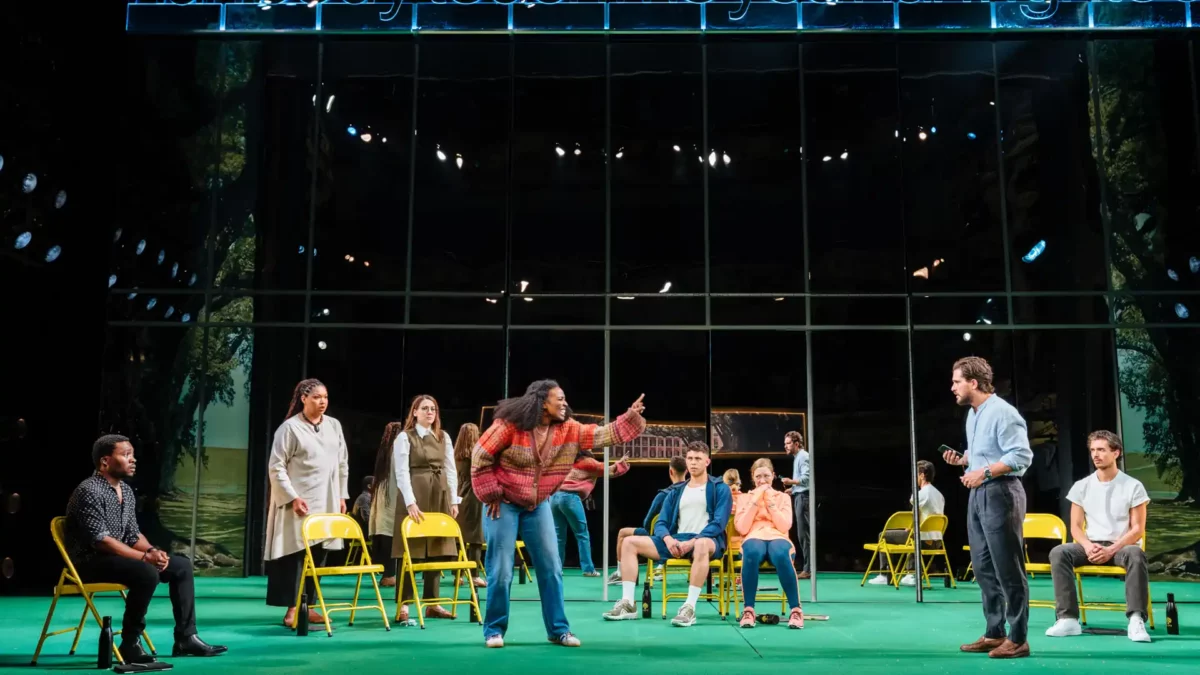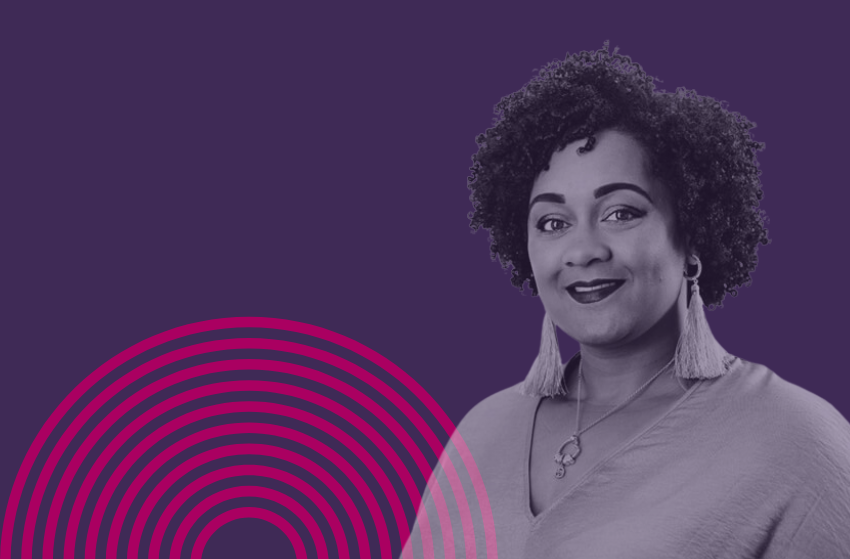Jade Beckles, our EDI Manager, reflects on non-inclusive inclusivity and what leaders and workplaces need to do to create true equity. That sometimes means creating spaces, programmes and initiatives that aren’t available to everyone.
Leadership often talks about inclusion as the act of bringing everyone together, ensuring all voices are heard and valued equally. Yet, as public sector leaders know, building inclusive institutions is far more nuanced, where we sometimes overlook a fundamental paradox: true inclusivity doesn’t always mean everyone needs to be included in every space. Sometimes, it means creating selective spaces where minority voices can thrive without being overshadowed or diluted by dominant groups. This concept of ‘non-inclusive inclusivity’ isn’t a contradiction—it’s a deliberate strategy to rebalance power dynamics and prioritise equity. At GatenbySanderson, we’ve seen how this approach can foster psychological safety, authenticity, and even innovation in our workplace. As we encourage our clients to explore this practice, let me illustrate its impact through the example of Jeremy O. Harris’s ‘Black Out’ audience night at Slave Play.

Slave Play London Cast. Photography by Helen Murray. Source: Noel Coward Theatre
A radical invitation for Black inclusion
It’s no secret that the inclusion of Black people in theatre, whether on stage, in the audience, or behind the scenes, has rarely been prioritised in this field. This disengagement comes from a long-standing catalogue of lack of representation, socioeconomic barriers, unwelcoming atmosphere, and not being able to resonate with the offering. So, when I learned that Jeremy O. Harris, a Black and American playwright, was bringing Slave Play to London’s West End, complete with two Black Out Nights, I at once knew I had to attend. This concept of performances dedicated exclusively to Black-identifying audiences was bold and necessary—finally, a production intentionally creating space for a Black audience to experience a story that, in Harris’s words, was ‘free from the white gaze’.
Many of us who are Black carry an acute awareness of our Blackness—of how the world sees us. For some, this awareness is rooted in a strong sense of pride and identity, but for many, it is continually shaped by experiences of racism. Blackness holds a unique beauty, but it also carries a collective pain, worsened by daily microaggressions that question the worth, intelligence, and humanity of this community of people.
This experience doesn’t disappear when we step into the workplace. For many Black professionals, these same microaggressions and biases persist, eroding confidence and authenticity. This impact often shows up as reluctance to speak out, hesitation to bring our full selves to work, or a sense of otherness while navigating environments that do not reflect or support our lived experiences—and, at its worst, can lead to complete isolation.
For Black audiences, the Black Out Night was more than a theatrical performance—it was a radical invitation to reconnect with one’s identity in ways that were affirming, safe, and unfiltered. But this decision faced backlash, as all great paradigm shifts do. There has also been controversy in the past over a woman only screening of Wonder Women, some seeing exclusion and shame rather than pride, representation and empowerment for a marginalised group. But Harris defended his decision on BBC Radio 4, explaining that this wasn’t about excluding white people; it was about creating a radical invitation for Black people—an invitation that says, ‘Specifically you’. Of course, theatres cannot legally enforce a ban on any group; Black Out nights are typically promoted this way to actively encourage Black audiences to attend. White patrons could technically still buy tickets to this night and attend without being turned away. But despite the outrage, I can imagine that not many would buy tickets and attend the Black Out nights for fear of feeling slightly awkward and unwelcome. We understand, we know well the feeling of being in cultural spaces that were not meant for us.
The importance of safe, selective spaces
True inclusivity often means the exclusion of majority groups, if only temporarily, to balance an existing power disparity. Marginalised groups deserve a chance to experience their own stories in spaces crafted uniquely for them. In too many public and corporate spaces, marginalised voices are often forced to adapt their stories or silence their reactions to fit within the norms of the majority group. Black Out Night offered a deliberate shift in power, one where the Black audience could authentically engage with a story that held resonance for their own lived experiences.
The atmosphere on the night was palpable: an unspoken connection, a crackle of excitement in the air as we gathered and sat, filled with a collective sense of understanding, solidarity, and acknowledgement, expressed with the ‘Black nod’ as we honoured each other in a space created to centre our experiences.
Black audiences laughed deeply, affirmed openly, and kissed our teeth to the play’s exploration of race, sexuality, and power, reclaiming our emotional agency without hesitation or filtering reactions for fear of being misunderstood or judged. Scenes that might make white audiences uncomfortable sparked recognition and validation amongst the Black audience. I could openly share those knowing looks with fellow audience members—having whole conversations without actually saying a single word, the way Black people do—without needing to exchange those glances in secrecy. It felt liberating.
Non-inclusive inclusivity in action at GS
In addition to centring Black experiences, Harris’s Black Out Night also addressed intersectional issues, shedding light on the distinct ways Black women, and the Black LGBTQ+ community experience oppression and marginalisation.
It dived into themes that rarely receive open dialogue in mixed settings—such as the role of Black women in predominantly white feminist spaces, and the casual power dynamics that arise in interracial relationships. Moments in the play confronted these themes head-on, and received audible resonation from the Black women, inviting us to see our own intersectional stories represented with nuance and integrity.
At one point, several audience members left during a same-sex intimacy scene. It highlighted the layered, sometimes conflicting nature of intersectionality within the Black community, a reminder that even within ‘safe spaces’, there is nuance, complexity and work to be done. By creating this space, Harris allowed these difficult conversations to be seen and discussed wider in the post play Q&A, within our own community, without external judgement.
But this principle of selective inclusion isn’t limited to the arts—it’s just as essential in workplace settings. At GS, we’ve embraced this concept through our Affinity Groups, which offer employees spaces to connect, share, and thrive based on shared experiences or identities.
Our LGBTQ+ Affinity Group is a closed space exclusively for members of that community. It exists to protect privacy and foster a safe environment, allowing participants to seek support regardless of whether they have publicly disclosed their identity or not. In contrast, our Affinity Groups for race, women, and disability are open to all. This difference reflects the specific needs of each group and the importance of balancing uniformity with individuality.
True inclusivity doesn’t always mean everyone needs to be included in every space.
The LGBTQ+ group exemplifies how non-inclusive inclusivity can meet unique challenges head-on. By creating a dedicated space, GS has enabled this community to feel supported and valued without fear of judgment or exposure. At the same time, our Allies Group offers a separate space for non-LGBTQ+ colleagues to learn, reflect, and offer support, without encroaching on the community’s private moments.
A framework for leadership
The success of Slave Play’s Black Out Night reveals the profound benefits of selective inclusion (or, non-inclusive inclusivity) and offers a model for organisations looking to build true equity. While it may feel counterintuitive to some, offering dedicated spaces can serve as a powerful tool for healing, connection, empowerment and productivity.
Harris’s Black Out Night and GS’s Affinity Groups share a common thread: both acknowledge that certain experiences cannot thrive in mixed company. True inclusivity requires leaders to ask tough questions: Who needs this space most? Who will benefit? Who might inadvertently harm it? Who does my discomfort with intentional exclusivity serve the most?
This approach requires courage, but the rewards are immense. When people feel psychologically safe, they’re empowered to bring their best to the table. This is not just about healing; it’s about unlocking the potential for creativity, productivity, and genuine engagement.
Opening the debate
We must challenge ourselves to think beyond affinity groups and consider how selective inclusion can be a powerful tool both within and beyond our organisations. While the role of employee affinity groups is invaluable in fostering belonging and amplifying marginalised voices internally, can we also extend this thinking outward? How might we use selective inclusion to empower minority communities in the wider society or to better serve underrepresented groups among our service users?
We’re particularly interested in hearing how selective inclusion has positively impacted other minority groups, whether in the workplace or in the broader community. We encourage leaders to reflect on where non-inclusive inclusivity has worked within their own organisations or external practices. Please share your examples in the comments, and let’s open the debate together.
Lessons for organisations and leaders
The success of Black Out Night reveals the profound benefits of selective inclusion and offers a model for organisations committed to equity. Leaders can apply these principles in several impactful ways:
- Affinity Groups and Safe Spaces: Provide closed networks for minority groups and consider whether ally participation is appropriate based on the group’s needs.
- Leadership Programmes for Marginalised Groups: Invest in initiatives that specifically elevate underrepresented voices to senior roles.
- Targeted Listening Sessions: Facilitate discussions exclusively for minority staff to share concerns and experiences.
- Diverse Hiring Panels: Ensure decision-making processes reflect a broad spectrum of lived experiences.
- Culturally Specific Events and Celebrations: Honour cultural or heritage milestones with exclusive events that validate and empower community members.
- Tailored Wellbeing Programmes: Address unique stressors and challenges faced by minority group employees.
- Selective Feedback Loops: Seek input from those most affected by policies, ensuring their voices shape meaningful change.
- Pilot Programmes within Marginalised Groups First: When launching new initiatives, pilot them within marginalised groups first to gather feedback and refine the approach.
- Senior Leadership Office Hours for Marginalised Groups: Set up regular, exclusive office hours, in office or virtually, for senior leaders to connect directly with marginalised employees.
- Active Sponsorship of Marginalised Talent: Encourage leaders to actively sponsor talent from marginalised groups, providing advocacy and opportunity at all levels.
Bold and brave leadership must embrace non-inclusive inclusivity. This isn’t about permanent exclusion, but rather a deliberate, strategic inclusion that prioritises restoring a power balance, creating psychological safety, and empowering those who have been historically marginalised.
When we create spaces where minority voices are amplified, we give power back to those who have long been on the periphery. And in doing so, we don’t just create inclusive workplaces; we create spaces where transformative magic happens.
